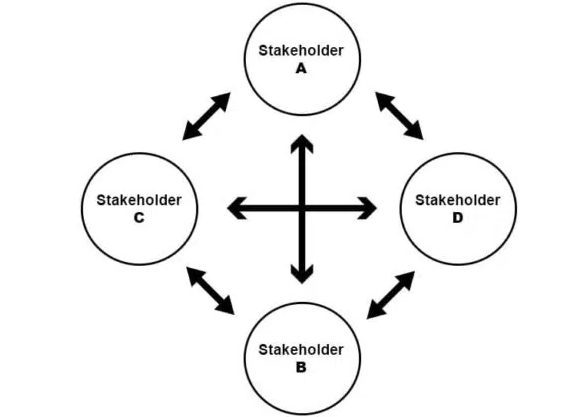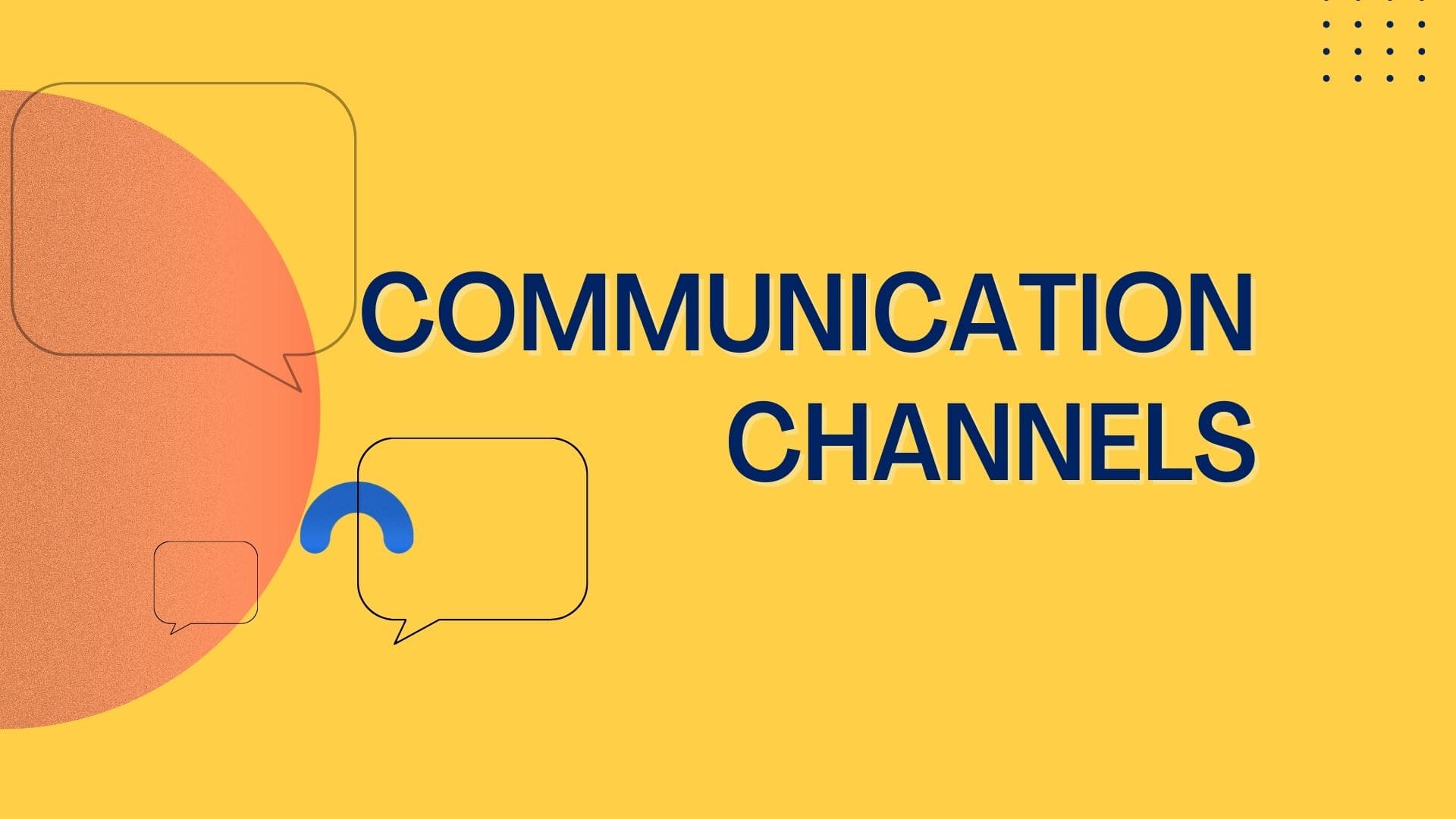Welcome, readers, to a vital exploration of communication channels. In our fast-paced world, effective communication is paramount. This article delves into the significance of various channels, from face-to-face meetings and emails to audio, video calls, and SMS messages. Discover their pros and cons, the formula for calculating project Communication channels formula, and how to optimize them for internal and external purposes.
Join us to unravel the keys to effective interaction in the digital age.
What is a Communication channels formula?
Communication channels formula are the pathways through which we share information with others. They serve as the conduits for the flow of information, whether within a company’s internal network or directed outward to customers and other stakeholders.
In the past, face-to-face interactions were the primary mode of communication. However, for business purposes, it’s more practical to classify the Communication channels formula into two broad categories:
Internal Communication
This pertains to interactions occurring within your own company. It encompasses communication between employees, teams, and departments, fostering collaboration and information sharing within the organization.
External Communication
This involves reaching out to customers, clients, and other external parties. It’s about how your company connects with the outside world, including marketing efforts, customer support, and stakeholder engagement.
Use of communication channel
Communication channels are essential for facilitating the flow of information within a company. This includes disseminating company-wide policies and events, employee benefits information, managerial communications, customer orders and requests, team brainstorming sessions, and sharing status reports.
These channels keep employees informed, promote effective leadership and coordination, ensure customer satisfaction, foster innovation, and enable informed decision-making, all vital for the organization’s overall success and efficiency.
Also, Checkout: Unlocking Business Growth Consultant Insight
Number of communication channels in a project
The number of Communication channels formula within a project is crucial to communication complexity. This metric is intrinsically linked to the count of stakeholders involved; as the number of stakeholders increases, so does the number of communication channels.
This concept is graphically illustrated below, demonstrating that the number of communication channels signifies the multitude of distinct pathways through which project stakeholders can exchange information, ideas, and updates.
Understanding this relationship is fundamental for project managers as it highlights the need for effective communication strategies and emphasizes the potential challenges in maintaining clear and efficient communication amidst growing stakeholder involvement. Managing these channels effectively ensures that project information is disseminated accurately and promptly, ultimately contributing to project success.

How to calculate the Communication channels formula
In project management, calculating communication channels is crucial to ensure efficient dissemination of project updates to all stakeholders.
The Communication channels formula guides this process:
Ch = N(N-1)/2,
where Ch represents the number of communication channels,
and N denotes the count of stakeholders involved.
Armed with this formula, project managers can strategically plan and optimize their communication strategies, ensuring that project updates reach all stakeholders in a timely and efficient, thereby enhancing project management effectiveness.
Formula to calculate Communication channels formula
Number of Potential Communication Channels
= n x (n-1)/2
Where n = the number of project stakeholders (or team members) involved.
Easy Example of Communication channels formula using the formula
To calculate communication channels within a project, identify the number of team members. This can be achieved by multiplying the number of individuals assigned to specific project roles by the number of roles.
Once you have the total count of team members, determine the number of Communication channels formula by multiplying this figure by the number of project stakeholders.
Let’s consider a scenario with 6 team members as an illustrative example.
If n = 6
The formula of the communication Channel would be expressed as:
=6*(6-1)/2
=6*(5)/2
= 30/2
= 15
Then,
15 would be the number of potential communication channels
Effective Communication Channels for Your Business in 2023
While it’s a straightforward fact that not every communication channel suits every company, it’s prudent to explore and consider the ones currently underutilized, as they have the potential to enhance team communication and elevate the overall customer experience.
Face-to-face communication
In the past, face-to-face meetings were the primary mode of communication before video meetings gained popularity. Despite feeling somewhat old-fashioned today, they still hold a crucial role in modern workplaces due to the significance of non-verbal communication, which accounts for approximately 90% of our communication. Body language, posture, and facial expressions are essential for conveying messages effectively.
However, in-person meetings come with a notable downside: they are costly, involving expenses for meeting rooms and commuting. As a result, face-to-face meetings are best reserved for vital decisions, such as executive-level meetings or closing high-value deals. At the same time, alternative methods should be considered to save time and money.
Emails
Email, a communication veteran from the late ’60s, is still widely used but faces competition from newer platforms like video calls. Each day, a whopping 293 billion emails fly across the globe, and most of us get about 100 daily. Why is email so popular? It’s super affordable! With the right software, you can send loads of emails for pennies.
You can use email to talk to folks outside your company and within. Externally, it’s still a money-saver and can give you decent results, but it’s best when combined with other methods. Internally, though, niftier tools like Slack or Microsoft Teams make chatting a breeze.
Audio / Video calls
The pandemic made video calls a vital communication tool, enhancing efficiency and cost-effectiveness for personal and professional use. While they offer voice, pitch, tone, and facial expressions, they can’t entirely replace in-person meetings. Modernized by VoIP technology like Cloud Talk, phone calls provide stable and feature-rich communication accessible via various devices, but they rely on a strong internet connection.
Both video and phone calls have become essential, with video calls excelling in visual communication and VoIP enhancing audio calls with versatile features.
SMS Messages
Despite the rise of texting apps, SMS remains a potent communication channel for businesses. It boasts impressive statistics, with 89% of people reading SMS messages within 30 minutes of receipt and 34% doing so in under five minutes. Unlike email, SMS is less prone to spam due to the difficulty of obtaining phone numbers and the cost associated with sending SMS messages.
As a result, customers are 134% more likely to open and read SMS than email. While SMS excels in external customer communication, the MMS vs. SMS debate gains relevance when businesses seek to convey more detailed or visual content. However, SMS may be considered somewhat cumbersome and costly for internal use.
Conclusion
We’ve navigated the diverse landscape of Communication channels formula, from traditional to modern. We’ve uncovered the power of face-to-face meetings, the ubiquity of emails, the efficiency of audio and video calls, and the enduring impact of SMS messages. Understanding their pros and cons empowers us to communicate effectively internally and externally. Whether you’re a project manager, a team leader, or an individual seeking better ways to connect, this knowledge equips you to make informed choices. So, harness these tools wisely and watch your communication become a cornerstone of success in our digital age.





